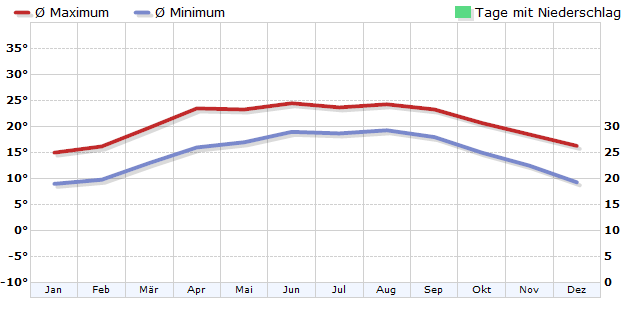Climate Nepal
Nepal has different climate zones, which are characterized by the altitude and the monsoon winds. Spring in Nepal lasts from the middle of February to the middle of May. The summer from mid-June to mid-September is rainy due to the southeastern monsoon with humid and warm winds, often rain falls for days. The climate is humid and humid; in the mountains (snow line in the Himalayas: 5,000 to 5,800 m) snow falls (unsuitable for trekking tours). Autumn October and November are warm, often with clear skies. The northwest monsoon in winter from December to February brings dry and cool air from the interior of Asia due to the monsoon winds.
The southern part of the country (Terai area) has a tropical climate, which is very warm and humid (mean annual temperature approx. 25 °C, extreme values: 44 °C or The low mountain range of the country with its numerous valleys (Siwalik chain; foothills up to 1,800 m with the Kathmandu valley, among others) has a moderate warm climate (average annual temperatures between 16 and 21 °C; 500-2,000 mm per year).
In the capital Kathmandu, average temperatures of 10 °C are measured in January and 24 °C in July. The annual rainfall is 1,400 mm. The most pleasant travel time in the Kathmandu Valley, with temperatures around 20 °C and good visibility, is October and November, as well as the spring months. In winter, temperatures range between 20 °C during the day and 0 °C at night.
The northern part (the highlands of the Vorderhimalaja, rising to 4,000 m) has a temperate cool climate, while the following Hochhimalaja at altitudes above 4,000 m (including the highest mountain in the world, Mount Everest, at 8,848 m) is characterised by a high mountain climate (cold winters and lower precipitation than in the aforementioned areas).
The Kathmandu Valley and Pokhara Valley are best visited between October and March. The best time for trekking in the mountains is from October to November and from February to April.


